|
|
|
Paths to History |
|
|
|
 Beirut Central District Beirut Central District
The Directorate General of Antiquites -
Interactive Archeological Map Of Beirut
|
|
|
|
Ottoman
1516 - 1918:
Cathedral Saint George
of The Maronites | Emir Mansour 'Assaf Mosque
Glass Production in Beirut | Old City
(Beirut Al-Qadimah) | Ottoman Silk Workshop
| Serail Hill The Souks Site | Old
Ottoman Serail |
|
|
|
Cathedral
Saint George of The Maronites |
|
|
|
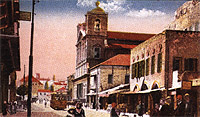
Built in 1890 by the Archbishop of Beirut, Mgr. Debs , after the
model of Santa Maria Maggiore in Rome. It replaced an older and smaller church belonging
to the same religious affiliation. Its Ottoman basement vaults now house one of the city's
archeological workshops. |
|
|
|
Emir
Mansour 'Assaf Mosque |
|
|
|
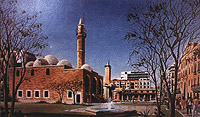
Emir Mansour 'Assaf Mosque of the 17th century survived
the war structurally intact and will remain a historical landmark in Beirut's townscape.
Reconstruction rendering. |
|
|
|
Glass
Production in Beirut |
|
|
|
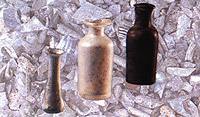
Much evidence of glass manufacture has been found in the
Beirut Central District (IFAPO excavations in Martyr's Square ) including glass debris for
recycling by the glass maker and perfumed oil and pharmacists' bottels from Roman to
Ottoman times. ( AUB Souks excavations ) |
|
|
|
Old City
(Beirut Al-Qadimah) |
|
|
|
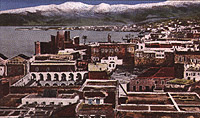
OLD CITY ( Beirut Al-Qadimah ) as seen by Louis Bonfils
around 1880: Khan al-Mallaha in the foreground, al-Badawi mosque and the castle built by
the Crusaders with later Mamluk and Ottoman structural additions. |
|
|
|
Ottoman
Silk Workshop |
|
|
|
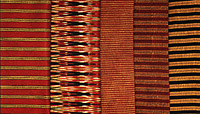
Discovered in the souks area in 1994 ( AUB-British
excavations). Surviving oriental materials and costumes of intricate design and rich
colors enchant the eye and inspire craft production to this day (traditional ikat silks). |
|
|
|
Serail
Hill |
|
|
|
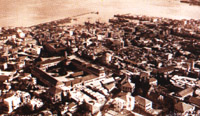
Built in the 1890s as the seat of the Ottoman government
and military hospital, the two buildings and the clock tower have already undergone or
undergoing restoration. The Ottoman hospital now houses the Council for Development
and Reconstruction ( CDR ) |
|
|
|
The
Souks Site |
|
|
|
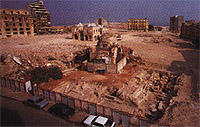
The Traditional souks stretched from Weygand
Street to the sea, divided into two by the main thoroughfare of Souk Tawileh. In the
foreground, the Zawiya Ibn'Iraq (1517) and at the northern end, the L'orient/Le Jour
(1924) and Majidiya Mosque (1844). AUB-British, Lebanese University and Dutch excavation
teams, Photo 1994. |
|
|
|
Old
Ottoman Serail |
|
|
|
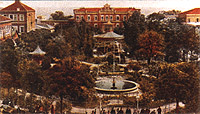
Built in the late 19th century as the local government
headquarters, its lush public gardens with fountains and pavilions provided a pleasant and
shady retreat. The building was demolished in 1950 to make room for parking on the central
square. (IFAPO excavations 1993-1995) |
|
Top |
|
Back to
Paths of History |
|
|
|
Back to
Construction
Beirut Central District | Current World Bank projects in Lebanon | Electricity Rehabilitation |
|
|
|
WHAT IS SOLIDERE?  THE ROLE OF THE COMPANY THE ROLE OF THE COMPANY  THE PROJECT THE PROJECT  THE MASTER PLAN THE MASTER PLAN
 THE PROGRAM THE PROGRAM  CURRENT DEVELOPMENT CURRENT DEVELOPMENT  ANTICIPATED PHASING ANTICIPATED PHASING  ARCHEOLOGY ARCHEOLOGY
 THE SOUKS THE SOUKS |







